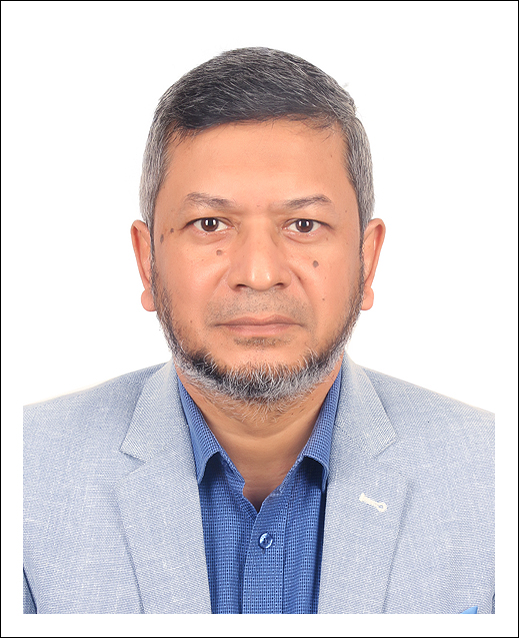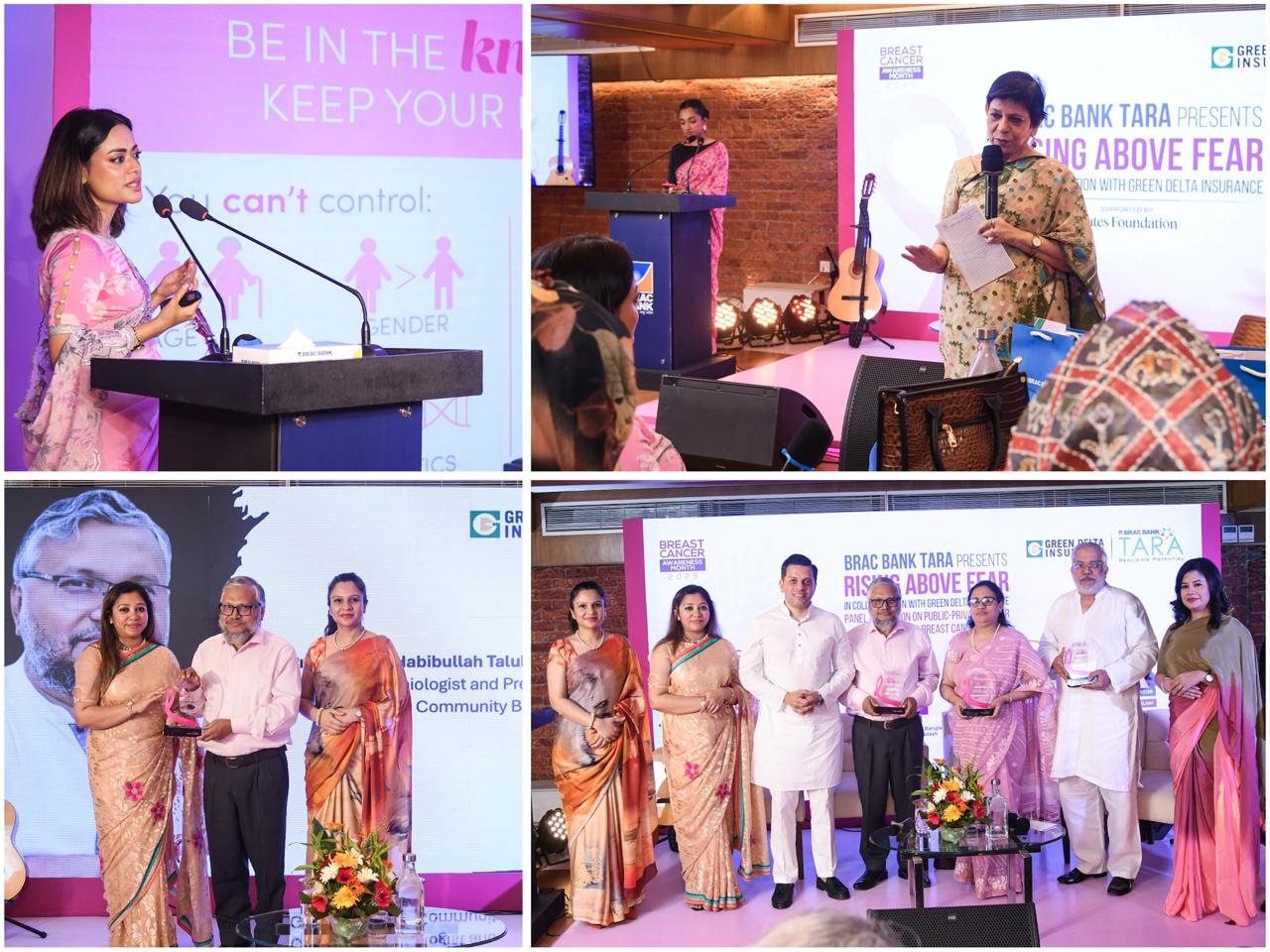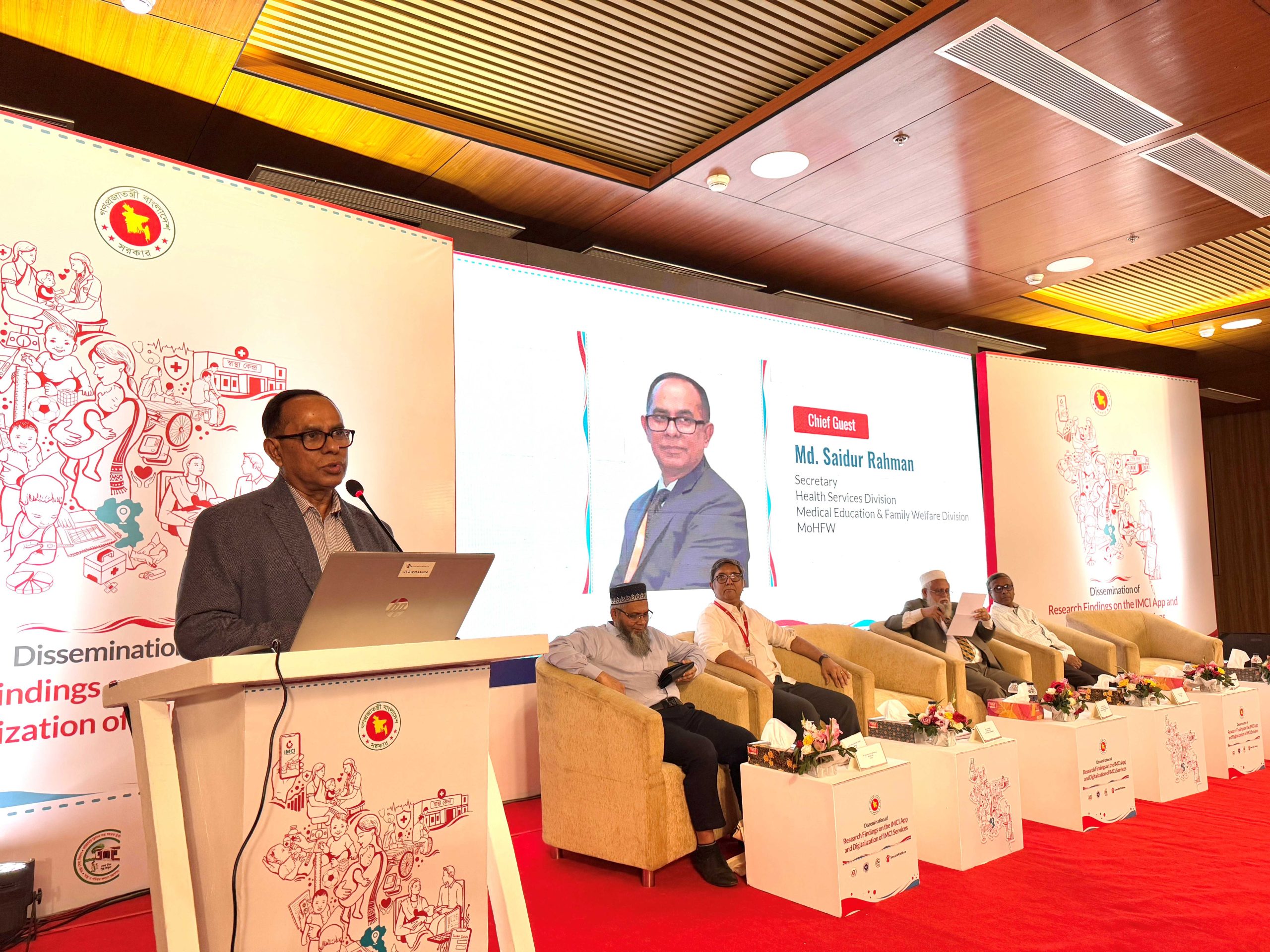A transformation that the country’s villages and remote areas have undergone, creating opportunities and connecting the rural masses to the greater market
By Khawaza Main Uddin
The economic face of the country has changed remarkably and is still changing fast with rural areas increasingly being part of the mainstream business activities dominated by the urban players. The rural Bangladesh, which once represented the image of tranquility, is now emerging as a two-way market player – as small hubs of farm and non-farm productive activities and as pockets of consumers of various commodities and services here and there.
In fact, geographical and cultural differences between the centres of cities and towns and the sprawling villages are no longer so wide despite the divide in education, possession of wealth and availability of utility services. At least there is no isolation of the rural areas as the country is heading for a massive transformation through urbanisation of the rural Bangladesh. It is believed that Bangladesh will turn into a city-state.
The country has more than tripled food production since independence, thanks to the farmers living in rural areas. Apart from grains, commodities such as vegetables, fruits, poultry, fishes and dairy products are coming to the urban market – all from rural areas. Although there are issues such as fair prices of agricultural produces, the challenges offer business opportunities for the benefits of all parties – growers, traders and consumers all over the country.
The changes in rural areas were triggered by a combination of factors. The famine of 1974 called for attaining food autarky. Roads and bridges have linked (with some exceptions) almost every nook and corner of the country with at least regional highways and district towns. Mobile phone penetration has brought about the most noticeable revolution in rural Bangladesh, bringing people closer to their relatives in towns and cities and even abroad.
In the post-independent Bangladesh, especially in the 1980s, microcredit had not only provided the rural women the scope to become part of the economic activities but also injected the spirit of the people and the demand for development in terms of nutrition, housing, literacy, healthcare, social empowerment and investing in future. It is this rural women-folk that turned into workforce for the country’s major export-earning readymade garments sector.
Arguably the most significant change in terms of increase in income and inflow of money has been brought about by the remittances by expatriate workers. More than 10 million people, mostly (almost 100%) from rural areas, who captured overseas jobs and a few more million who returned home after serving abroad earlier, contributed to building a completely different rural economy by increasing purchasing power of their families and creating demand for consumption of various goods and services. As a matter of fact, the impacts of remittances on creating opportunities in rural areas are yet to be assessed properly.
Signs of a difference
At least a dozen people are seen at the tea stall of Nobu from morning till late night. The incentive to gather there is an adda where the villagers also watch television for news and entertainment. Now, many of the inhabitants have television sets (and of course fridges) at home in Sudampara village of Nagarpur, Tangail, as they have been enjoying benefits of access to electricity since the mid-1990s.
Nobu sells only a few items such as tea, salted biscuits, cigarettes and beetle nuts and the amount he receives at the end of each day is in a range of Tk 7,000. The money is derived from the village where there are a number of other shops of a variety of consumer items like cold drinks, juice and cosmetics along the road towards upazilla headquarters, although it is not a bazar. Thirty years ago, the road was not carpeted and boats were used for the people’s movement as well as transportation of goods for 4-5 months around the rainy season. Completely disconnected by the Dhaleshwari once upon a time, Nagarpur is now connected to both Tangail district town and the Dhaka-Paturia highway through a regional road and a number of bridges.
The villagers of Sudampara produce rice, major portion of which is sold and oilseed and pulses apart from vegetable items in their backyards. However, almost 150 people of different ages are working in Saudi Arabia and Singapore and sending money back to their family members. A number of youths are engaged in helping families to receive money through banks and electronic transfer. There is a Kinder Garten school beside government primary school in the village.They slaughtered as many as 13 cattle heads during the Eid-ul-Fitr, not Eid-ul-Azha when much higher number of animals were bought for sacrificial purpose.
This village represents thousands of others, especially in the districts such as Barisal, Munshiganj, Shariatpur, Narsingdi, Comilla, Noakhali and of course Sylhet, from where people migrated to different countries for jobs. It has also semblance with areas that grow rice, vegetables, pulses and oilseeds.
Formalising the informal economy
The country’s rural economy has been monetised significantly over the years, although empirical evidences cannot ascertain the depth of monetisation yet. What can safely be said is that the rural Bangladesh has undergone a massive transformation that has been reflected in changes in the value of labour in terms of wages and otherwise, penetration of consumer goods in every nook and corner of the country, and a variety of economic activities being recognised by the urban consumers and retailers.
Such changes have created business opportunities in the farming sector and as well as in the non-farming rural activities. The rural areas are not only suppliers of food items, but increasingly being considered as sources of raw materials, localised products, traditional and handicraft items, products based on indigenous knowledge, and an option for tourism.
However, there is no one-size-fits-all character of the rural economy and businesses; rather each region or smaller area is famous for and specialised in its unique offerings, be it local brands of sweetmeats, fruits, fishes, textiles, handicraft items, historic sites, and or picturesque scene. For instance, household products of canes or sheetalpati (mat made of a bamboo husk) of Barisal, Comilla, Tangail and Sylhetare are made by indigenous people of each locality.
All these have drawn attention off the urban players and citizens, most of whom have come from or have relocated themselves from rural areas ‘once upon a time’. This recognition has offered enormous opportunities for both rural and urban people in reaping maximum benefits from this integration of economic activities. Historically the farm-produces and services especially labour were of little value – an economic and cultural reality that left most people to live in poverty. Due to lack of economic activities round the year, people in many parts of the country once suffered for even want of food.
The increasing monetisation of the rural economy has given birth to some challenges to the rural people, though the changes have offered them opportunity to earn some money, access a variety of services, if not all, and created demand inclusive of need for better education, healthcare services, housing and so on. A new atmosphere has evolved in rural Bangladesh, in which the people’s services that were earlier often free should now be valued in monetary terms. And given the necessities of changing circumstances, homestead cultivation has turned into organisational farming, and over agriculture has gone increased modernisation and mechanisation, new businesses have evolved and financial services have reached in many cases at the doorsteps of the rural masses.
Drivers of change
A combination of factors have played the role of catalyst in the changes that have taken place in the rural areas, especially in linking them with the urban centres – geographically, culturally and through market connectivity. Each factor influenced the shaping of rural Bangladesh in each decade, leaving its clear marks on life, communications and businesses. However, it is the society that has raised demand and effectively accomplished the changes in the areas of development, access to finance, use of new technology, and graduation to a better life.
In fact, a major criterion for development, as perceived by the rural people, was road network to and from their villages. For example, construction of a bridge over the Jamuna River was a popular demand and political pledge of successive governments. Once it was built, the entire northern region has undergone a massive change. On the other hand, microfinance operations became immediately popular among the beneficiaries, particularly women, despite resistances from certain quarters in each locality, in view of its massive demand.
‘Microcredit operation in villages and construction of feeder roads by LGED (Local Government Engineering Department) connecting different parts of the country, internally and with regional highways, brought a massive change in the 1980s. This was followed by a revolution in ICT (Information and Communications Technology), mobile phones particularly in 1990s,’ said economist Hossain Zillur Rahman, who worked on rural development. ‘Remittances have then played a significant role in making the rural people as new consumers,’ he said but regretted that the changes that have taken place in rural Bangladesh were influenced by urban people and so the tendency to grow in the manner of urban needs.
Economist Binayak Sen, in a study paper, added that with increasing urbanisation and industrialisation, domestic remittances of the urban/industrial workers sent back to village homes has emerged as an important avenue of rural poverty reduction. He referred to the readymade garments sector, which pulled migrants workers, especially women, from villages and pushed a bit of cash flow to the rural areas. ‘An RMG female worker spends significant amount every month – mostly by Bkash (popular mobile commerce route) – to remit money to relatives residing in villages. Remittance sent by female RMG workers appeared to be an important route of upward mobility of the rural poor,’ he noted.
About the rural-urban connect in Bangladesh, Governor of Bangladesh Bank Atiur Rahman observed that it has been deepening faster than ever before mainly because of well-knitted road connections and information and technological development including growing mobile financial services. ‘The labour mobility has also enhanced both within and outside the country. The RMG sector and remittance have helped boost this mobility,’ he told ICE Business Times.
Transformation of agriculture
Probably the unsung hero in the process of changing the rural Bangladesh is the farmers’ community, who made possible tripling of Bangladesh’s grain production since independence. This is a community that dedicates all efforts, without much gain earlier, to feed the nation. In fact, the image and attitude of Bangladeshi farmers have undergone changes and are still changing – from a helpless rural man to an able small entrepreneur. These farmers have led the process of change and are trying to make agriculture a commercially viable option from its subsistence level. In the crop sector, productivity gains attained so far were unthinkable once.
Bangladesh is the fourth largest producer of fresh (inland) water fish, a piece of information compiled by the UN Food and Agriculture Organisation that has made many people surprised. In a delta blessed with criss-cross rivers, full of water bodies and marshland, it was not surprising, but what has earned respect and recognition of the global community is the success of the Bangladeshi farmers in pisci-culture. This also shows the success of Bangladeshi farmers as entrepreneurs.
Similar changes have been noticed in a number of sub-sectors of agriculture such as poultry. There has been a revolution in the production of eggs and poultry birds for meat that has taken place in the past two decades or so. This sub-sector has created small entrepreneurs, employment opportunities and opened up possibilities of new businesses in the rural areas.
Farmers of some regions and localities have earned reputation for producing particular crops or varieties. Jessore is a region which produces vegetables and flowers that meet the demand of Dhaka and other cities and towns. Narsingdi, Comilla, Munshiganj and Manikganj have also made their marks in supplying a number of farm produces to the cities. Rajshahi and Chapainawabganj are already famous for high quality and delicious varieties of mango while Chandpur has embraced the status of Hilsha hub. Greater Mymensigh has been recognised as fish growing region. Pabna and surrounding districts are being considered as milk-producing region. Faridpur produces jute and the northern region rice.
Despite the success of the farmers in increasing production and productivity, pricing remains an issue for farmers. If output of a particular item increases significantly, price falls and farmers lose and the next year, the farmers go for cultivation of lesser areas and as a result overall production falls and price goes up. Sometimes, the farmers lose everything to natural calamity since there is no crop insurance system in the country. Experts, however, say this kind of situation leaves the scope for research and development, investments, introduction of new technologies and contingency planning to reap maximum benefits out of agriculture. All offer business opportunities today.
Financial inclusion
Bangladesh Krishi Bank and Rajshahi Krishi Unnayan Bank are some of the pioneers in bringing the rural people, particularly farmers, under the coverage of monetary support. Otherwise, there were hardly any sources of funding, except hedge financing available informally in their some localities. Microcredit presented an option to the rural women but it is remittances sent by expatriate Bangladeshi workers that gave much liquidity to the rural people covering them with banking services.
Now, according to a recent study, Bangladesh has stood second among South Asian nations in ensuring access to financial services for its citizens, although there are no separate statistics for the rural areas. Sixty six percent of the Bangladeshi households have access to services including credit, savings and insurance from banks or microfinance institutions and cooperatives.
Financial inclusion has a percentage of the total population rise to 56.43% in 2010 from 39.76% in 2004. Microfinance can be considered as another criterion for rural financial inclusion. Between 2006 and 2013, per capita borrowing rose from Tk 4,345 to Tk 14,349 and the number of active borrowers increased 14.1 percent to 2.67 crore. Referring to the lower rate of default (only 5%) by microfinance borrowers, finance minister AMA Muhith recently said, ‘Changes can be brought in rural lives if we can utilise these microcredits for productive purposes.’
Urbanisaton of rural areas
Conspicuously, villages are increasingly losing their character in keeping pace with development – sometimes unplanned construction of infrastructure –and also the needs and demand for living, and consumption of over 160 million people on a small landmass of around 144,000 square kilometres created certain pressure on rural environment. Even the villages in Bangladesh are densely populated – a unique reality that offers both challenges and opportunities. While construction of roads, bridges, bazars, houses and a variety of commercial establishments are seen as sign of development, it also causes scarcity of land for cultivation. Bangladesh is losing 1% farmland every year due to urbanisation, indusrialisation, modernisation and infrastructure building.
‘Though quality of urbanisation remains poor the capital and its peripheries have been attracting huge number of youths for employment and self-employment,’ Dr Atiur Rahman said, who added that the Padma Bridge, now under construction, would further enhance the connectivity with the Southern Bangladesh. ‘If we can improve our infrastructures at a greater pace, the whole country will become a city-state’, he said.
The puzzle or remedies
Some experts say urbanisation of rural Bangladesh is not a choice but a compulsion for Bangladeshis for the sake of sustainable agriculture, development and well-being of people. Compact rural housing is being talked about in the development debates to protect farmland from depletion and ensuring modern life for the rural people in an environment-friendly atmosphere.
On the other hand, most of the rural areas are physically connected with road networks and benefits of ICT have reached people living in sprawling villages. Despite their connectivity to the market, they are yet to benefit equitably in terms of economic opportunities and access to utility and other services. All these offer a lot of opportunities for development and doing business.
The rural Bangladesh needs to create and capitalise on the social capital and the government and the private sector would be required to join hands in exploiting true potentials of the entire country and promoting fair business opportunities. An integrated economy can ensure a better future of Bangladesh.















